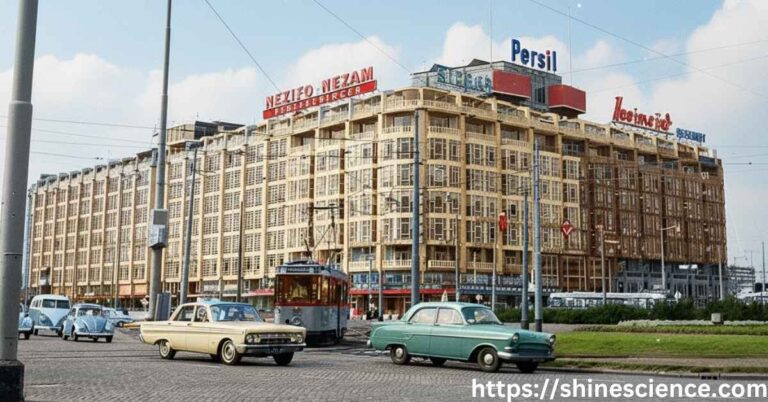
Introduction: Why Compare Dorsten and Fresno?
Dorsten vs Fresno Pollution, Air pollution is a growing concern worldwide, especially in urban areas. From smog to fine dust particles, poor air quality affects millions of people every day. In 2025, two cities often compared for their environmental differences are Dorsten, Germany, and Fresno, California, USA. But which city actually has better air? And what does that mean for the people who live there?
This article offers a side-by-side comparison of Dorsten vs Fresno pollution — looking at air quality data, sources of pollution, health implications, and sustainability efforts. Whether you’re a traveler, a resident, or just curious, this guide will give you clear and accurate insights into how these two cities compare when it comes to clean air and environmental quality.
Understanding Air Pollution: What Are We Really Breathing?
What is Air Pollution?
Air pollution refers to harmful substances in the air that can affect human health, animals, and the environment. These pollutants come from cars, factories, agriculture, wildfires, and even natural sources like dust and pollen.
The most common air pollutants include:
- PM2.5 (fine particulate matter): Tiny particles that penetrate deep into the lungs.
- PM10: Slightly larger particles that can still affect breathing.
- Nitrogen Dioxide (NO2): Mostly from car exhaust.
- Ozone (O3): A gas formed when sunlight hits pollutants; harmful when close to the ground.
- Carbon Monoxide (CO): A dangerous gas mainly from burning fossil fuels.
How is Air Quality Measured?
Air quality is measured using the Air Quality Index (AQI). This scale ranges from 0 to 500:
- 0–50: Good
- 51–100: Moderate
- 101–150: Unhealthy for sensitive groups
- 151–200: Unhealthy
- 201–300: Very unhealthy
- 301–500: Hazardous
Lower AQI numbers mean cleaner air. Both Dorsten and Fresno are monitored by their respective environmental agencies, providing daily and yearly averages.
Dorsten Pollution Levels in 2025: Clean and Green
Overview of Dorsten’s Environment
Dorsten is a small city located in North Rhine-Westphalia, Germany. Known for its green landscapes and low industrial activity, Dorsten has managed to maintain remarkably clean air in recent years.
In 2025, Dorsten’s average AQI ranges between 20–40, which is considered “Good”. This is largely due to:
- Efficient public transport systems
- Strict EU environmental regulations
- Low emissions from vehicles
- Plenty of green areas and forests
Government Measures to Keep Air Clean
Germany is known for its green initiatives, and Dorsten is no exception. Some of the policies in place include:
- Promotion of electric vehicles
- Green energy usage (solar and wind power)
- Banning old diesel cars in sensitive zones
- Monitoring air quality in schools and public areas
Thanks to these efforts, Dorsten continues to be a role model for clean urban living.
Fresno Pollution in 2025: The Struggle Continues
Why Fresno Faces Air Quality Challenges
Fresno, located in California’s Central Valley, has long battled with poor air quality. In 2025, the average AQI in Fresno often reaches between 100–160, putting it in the “Unhealthy for sensitive groups” category for many days of the year.
Why is this the case?
- Geography: The valley traps air pollutants like a bowl.
- Agriculture: Large-scale farming releases dust and chemicals.
- Wildfires: Increasingly common in California, adding smoke and soot.
- Heavy traffic and urban sprawl
Steps Fresno is Taking to Improve Air Quality
To fight pollution, Fresno has implemented several environmental programs:
- Incentives for electric vehicles
- Tree-planting initiatives
- Expansion of public transportation
- Air quality alerts and school policies on outdoor activities
While progress is being made, Fresno’s pollution remains a concern for residents with asthma, heart conditions, or young children.
Dorsten vs Fresno Pollution – A Side-by-Side Comparison
| Feature | Dorsten | Fresno |
|---|---|---|
| Average AQI (2025) | 20–40 (Good) | 100–160 (Moderate to Unhealthy) |
| PM2.5 Level | 8–12 µg/m³ | 25–35 µg/m³ |
| Main Pollution Sources | Cars, domestic heating | Cars, agriculture, wildfires |
| Government Regulations | Very strict | Improving but less strict than EU |
| Health Impact | Low | High (especially for children) |
| Green Spaces | Abundant | Moderate |
As the table shows, Dorsten has significantly cleaner air compared to Fresno. While both cities are trying to combat pollution, their challenges and progress levels are different.
Health Impacts of Air Pollution in Both Cities
Fresno – Health Risks on the Rise
In Fresno, the pollution levels are linked to:
- Increased asthma in children
- Heart problems in the elderly
- Chronic bronchitis and lung infections
- More hospital visits during wildfire seasons
These health risks cost millions in healthcare and reduce quality of life for many Fresno residents.
Dorsten – Low Health Impact, But Still Monitored
Dorsten residents enjoy cleaner air and fewer respiratory issues. Still, authorities continue to monitor pollution to catch any future issues, especially as climate change can affect air quality over time.
Environmental Sustainability and Future Outlook
Dorsten’s Green Vision
Dorsten plans to go even further with its sustainability:
- Becoming a carbon-neutral city by 2035
- Expanding renewable energy use
- Improving bike lanes and reducing car usage
- Educational programs in schools about climate action
Fresno’s Road to Recovery
Fresno’s future includes:
- State-funded green energy projects
- Better air quality technology in schools and hospitals
- Smarter urban planning to reduce traffic emissions
- Wildfire management systems
If these initiatives succeed, Fresno could significantly lower its AQI by 2030.
Conclusion: Dorsten vs Fresno Pollution – The Clear Winner
When comparing Dorsten vs Fresno pollution, the data speaks clearly. Dorsten’s clean air, strong environmental policies, and green initiatives make it one of the healthier cities to live in. Fresno, while improving, still battles serious pollution problems caused by geography, agriculture, and climate change.
However, there is hope. Fresno is investing in change, and with time, its air quality may come close to Dorsten’s. For now, though, Dorsten stands out as the cleaner, greener, and healthier city in this head-to-head comparison.
Final Thoughts: What Can We Learn from This Comparison?
This comparison between Dorsten and Fresno is more than just numbers. It shows how policy, geography, and community action shape the environment we live in. While Dorsten leads in clean air, Fresno’s story reminds us of the hard work needed to protect public health and combat pollution.
If you’re considering moving, traveling, or researching urban sustainability, this guide gives you a clear picture of what to expect in both cities.
FAQs: Dorsten vs Fresno Pollution
Q1: Which city has worse air quality, Dorsten or Fresno?
Fresno has worse air quality than Dorsten, with average AQI levels that often reach the “Unhealthy for sensitive groups” category, compared to Dorsten’s “Good” AQI ratings.
Q2: Why does Fresno have more pollution?
Fresno’s geography traps pollutants, and factors like agriculture, car traffic, and wildfires contribute heavily to the problem.
Q3: Is Dorsten a sustainable city?
Yes, Dorsten is considered highly sustainable. It uses green energy, promotes electric vehicles, and has strict environmental regulations.
Q4: Can Fresno improve its pollution levels?
Absolutely. Fresno is already making changes like expanding green zones, improving transportation, and planting more trees.
Q5: How does air pollution affect health?
Air pollution can lead to asthma, lung disease, heart problems, and increased hospital visits, especially in vulnerable groups like children and the elderly.



